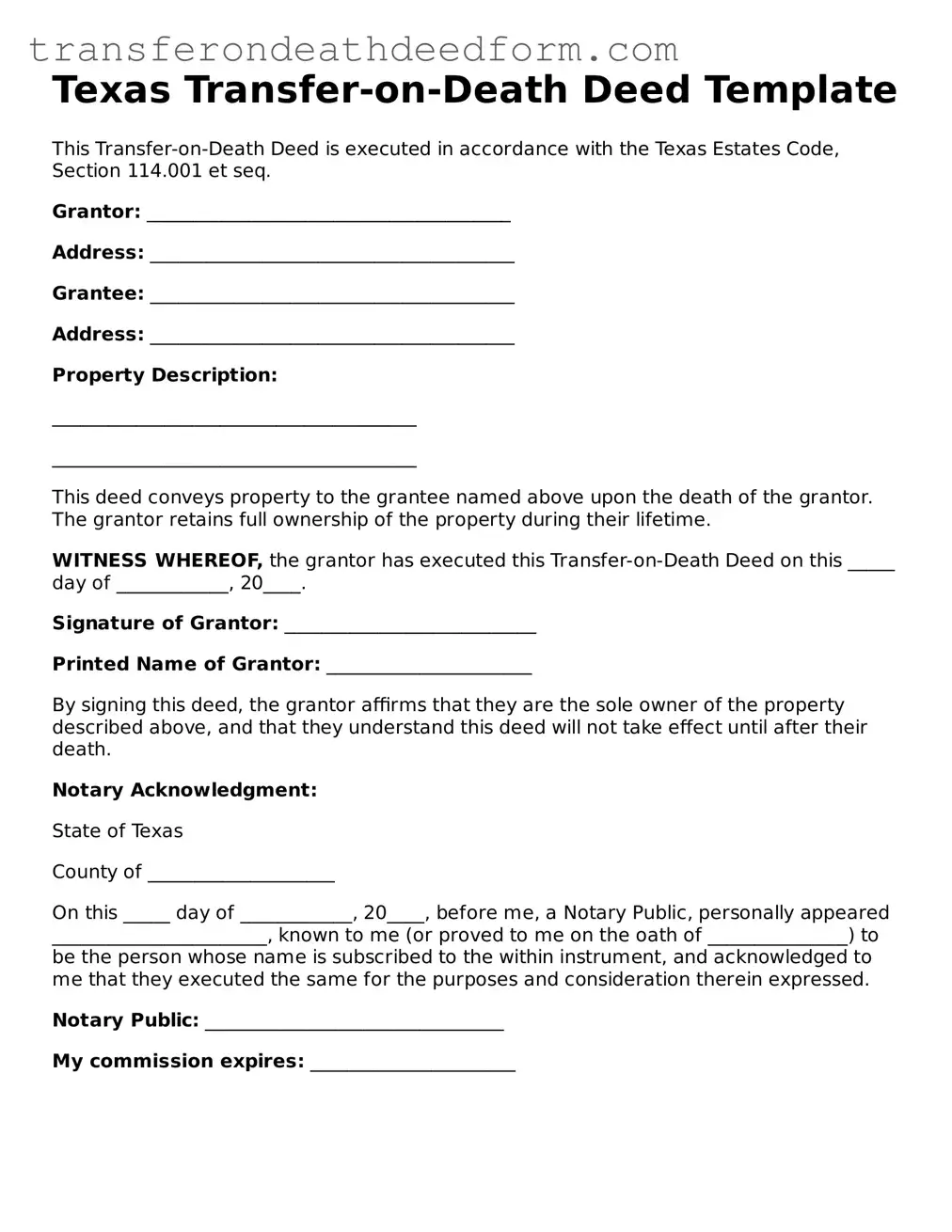Texas Transfer-on-Death Deed Template
This Transfer-on-Death Deed is executed in accordance with the Texas Estates Code, Section 114.001 et seq.
Grantor: _______________________________________
Address: _______________________________________
Grantee: _______________________________________
Address: _______________________________________
Property Description:
_______________________________________
_______________________________________
This deed conveys property to the grantee named above upon the death of the grantor. The grantor retains full ownership of the property during their lifetime.
WITNESS WHEREOF, the grantor has executed this Transfer-on-Death Deed on this _____ day of ____________, 20____.
Signature of Grantor: ___________________________
Printed Name of Grantor: ______________________
By signing this deed, the grantor affirms that they are the sole owner of the property described above, and that they understand this deed will not take effect until after their death.
Notary Acknowledgment:
State of Texas
County of ____________________
On this _____ day of ____________, 20____, before me, a Notary Public, personally appeared _______________________, known to me (or proved to me on the oath of _______________) to be the person whose name is subscribed to the within instrument, and acknowledged to me that they executed the same for the purposes and consideration therein expressed.
Notary Public: ________________________________
My commission expires: ______________________
